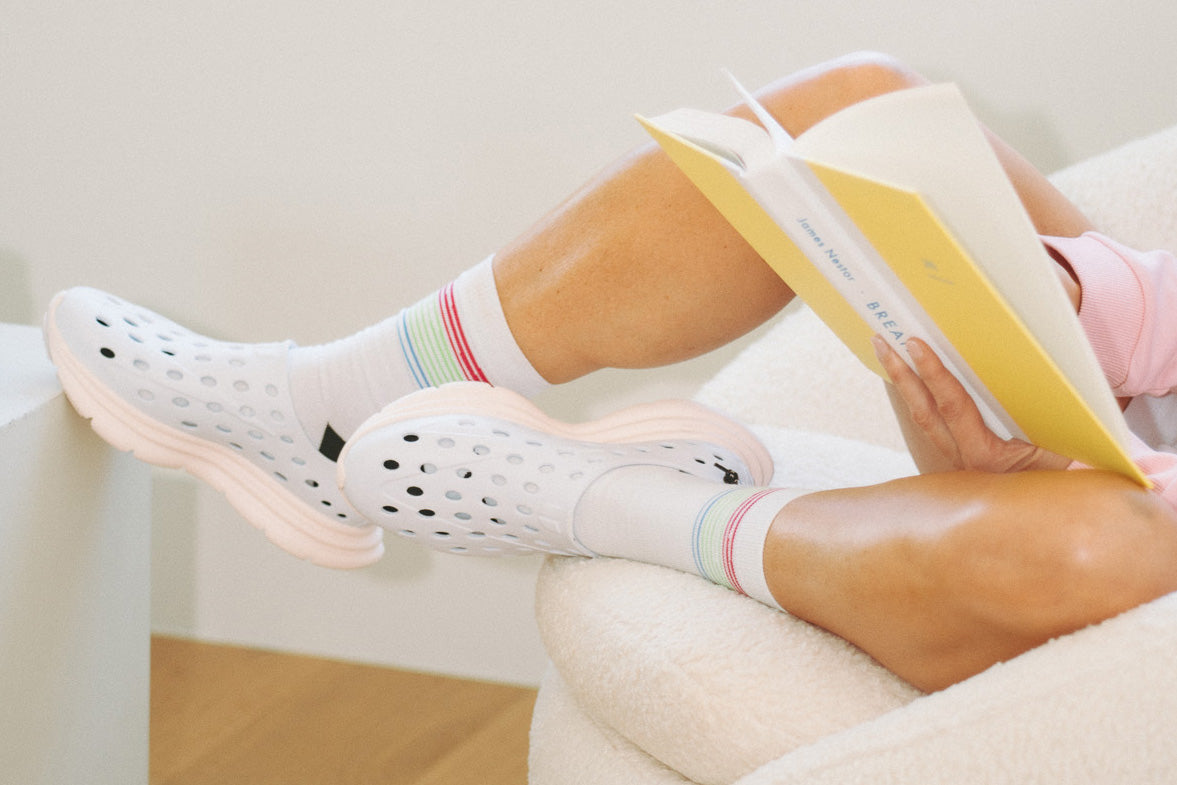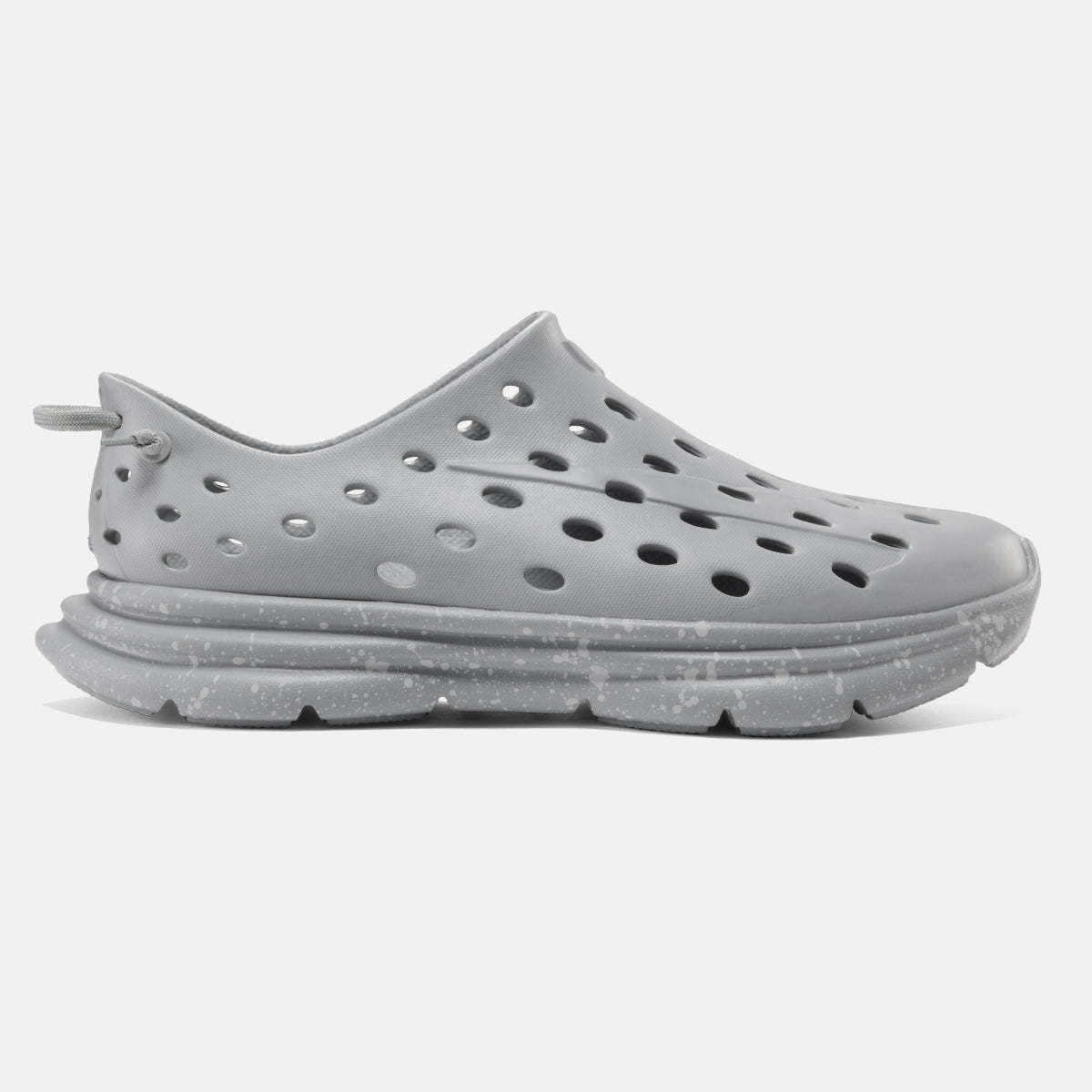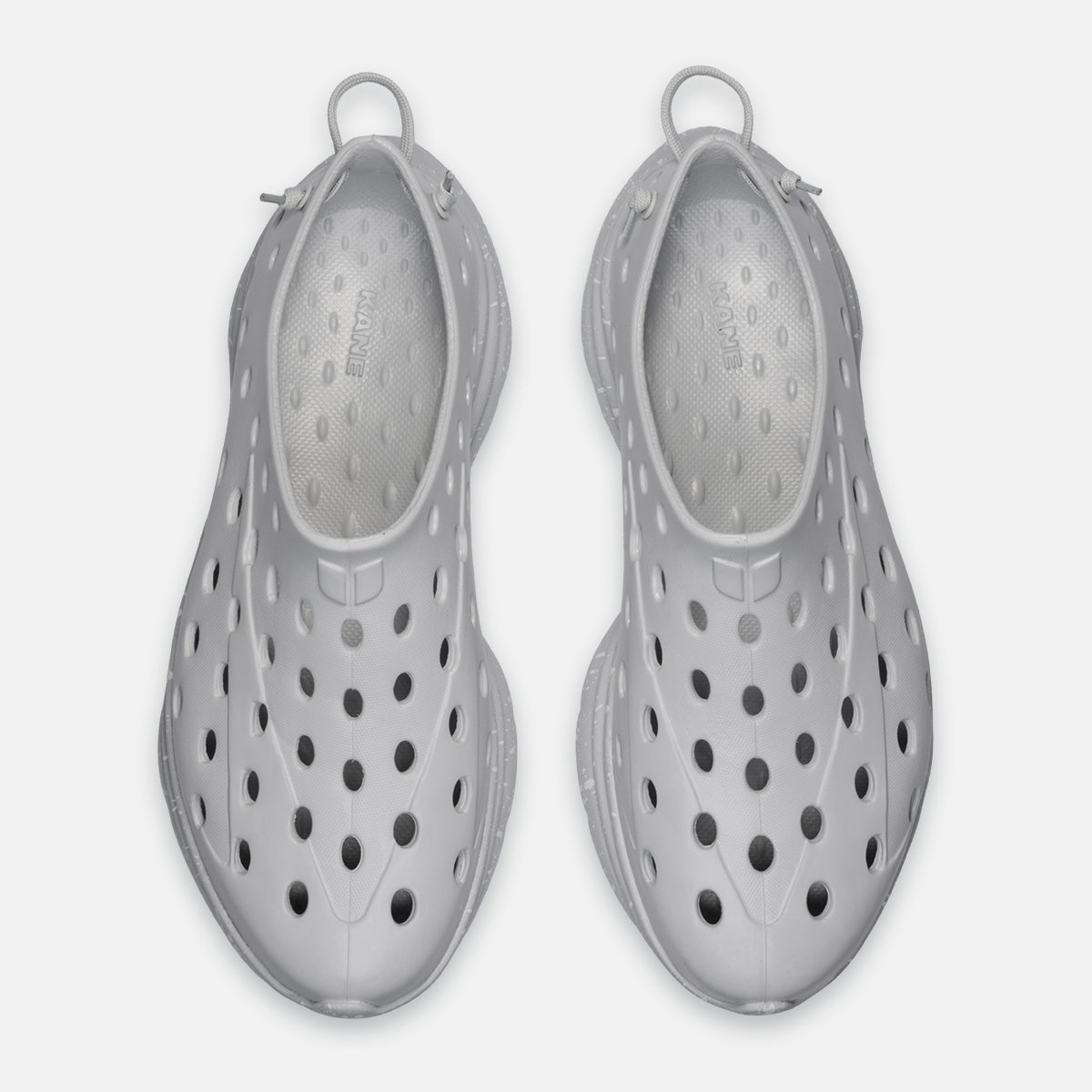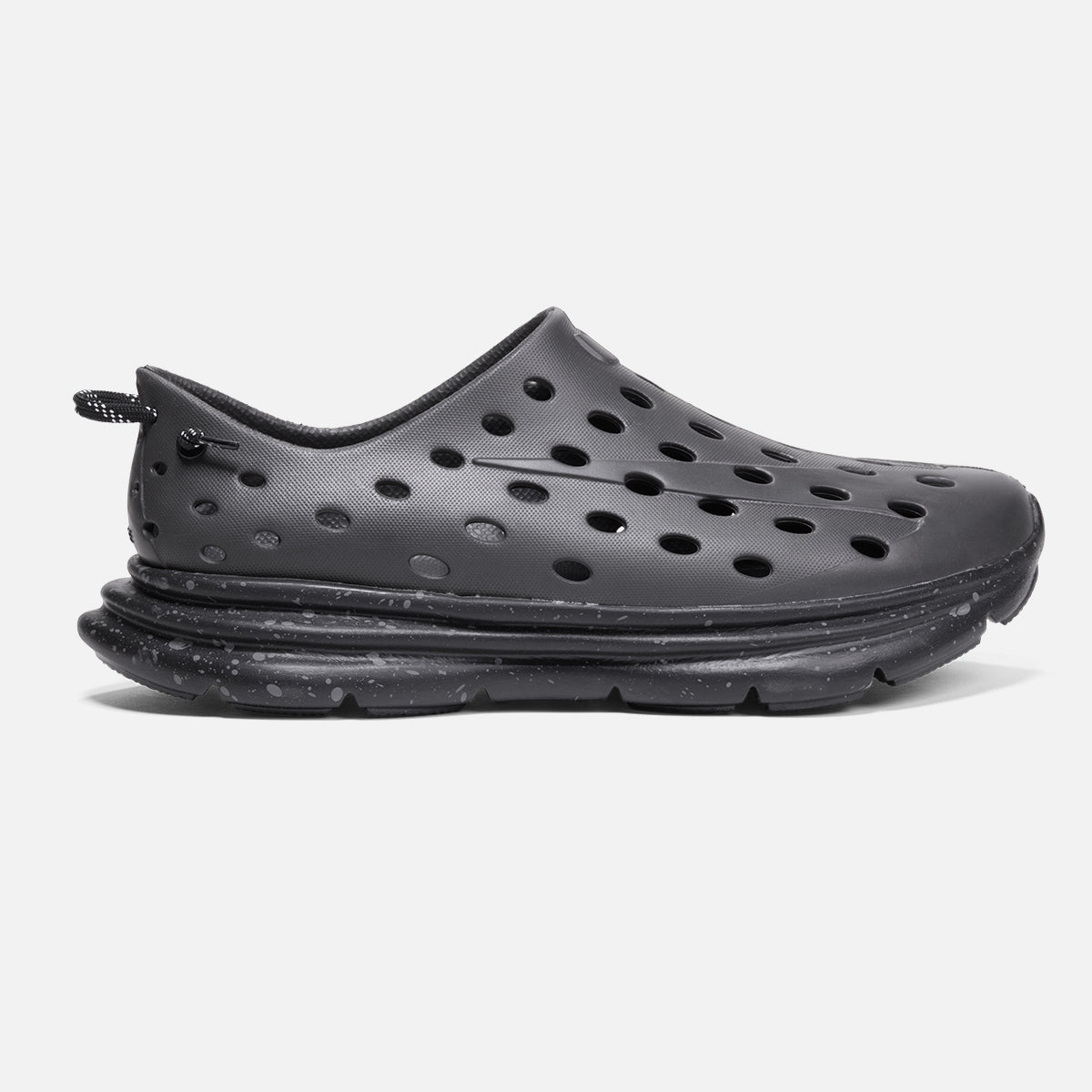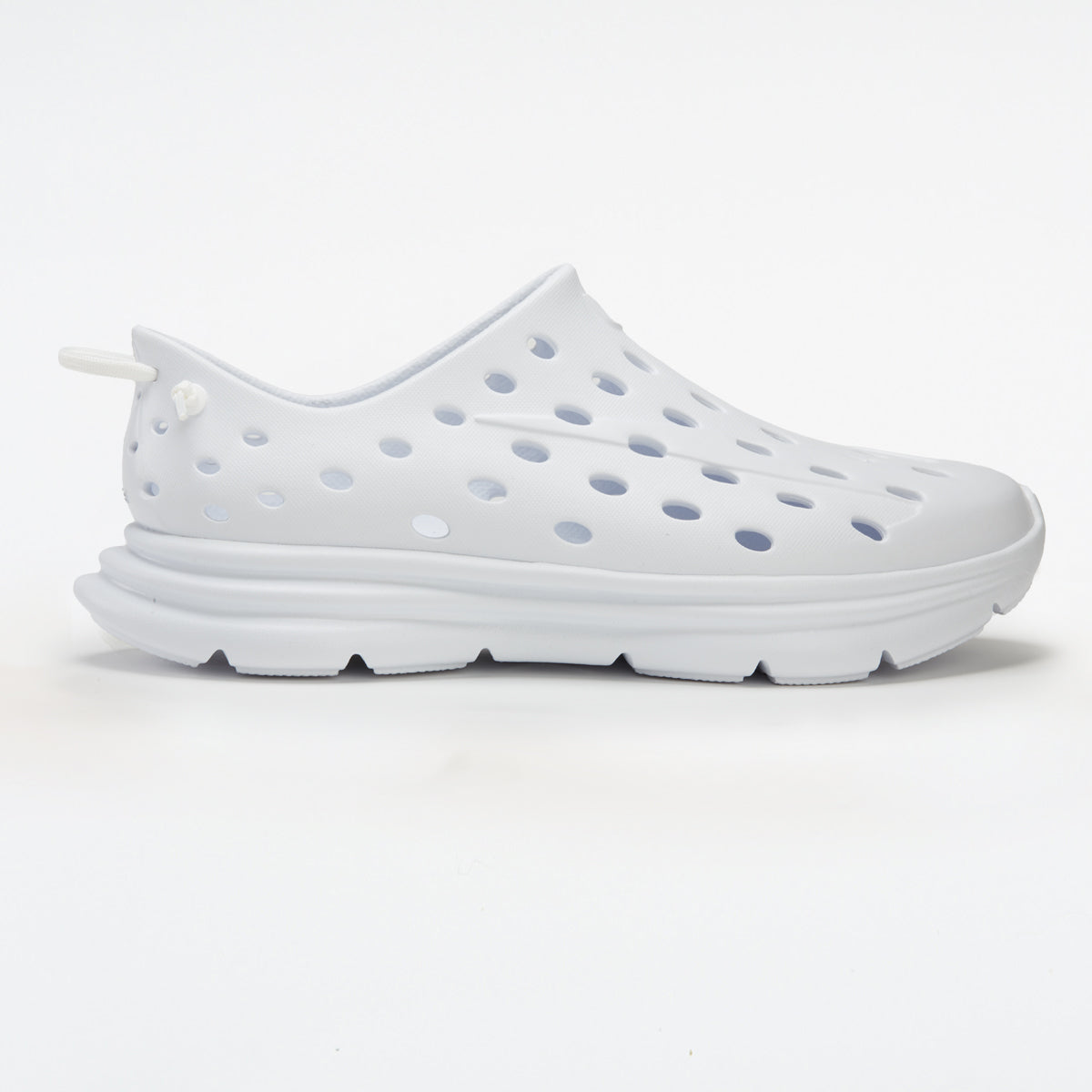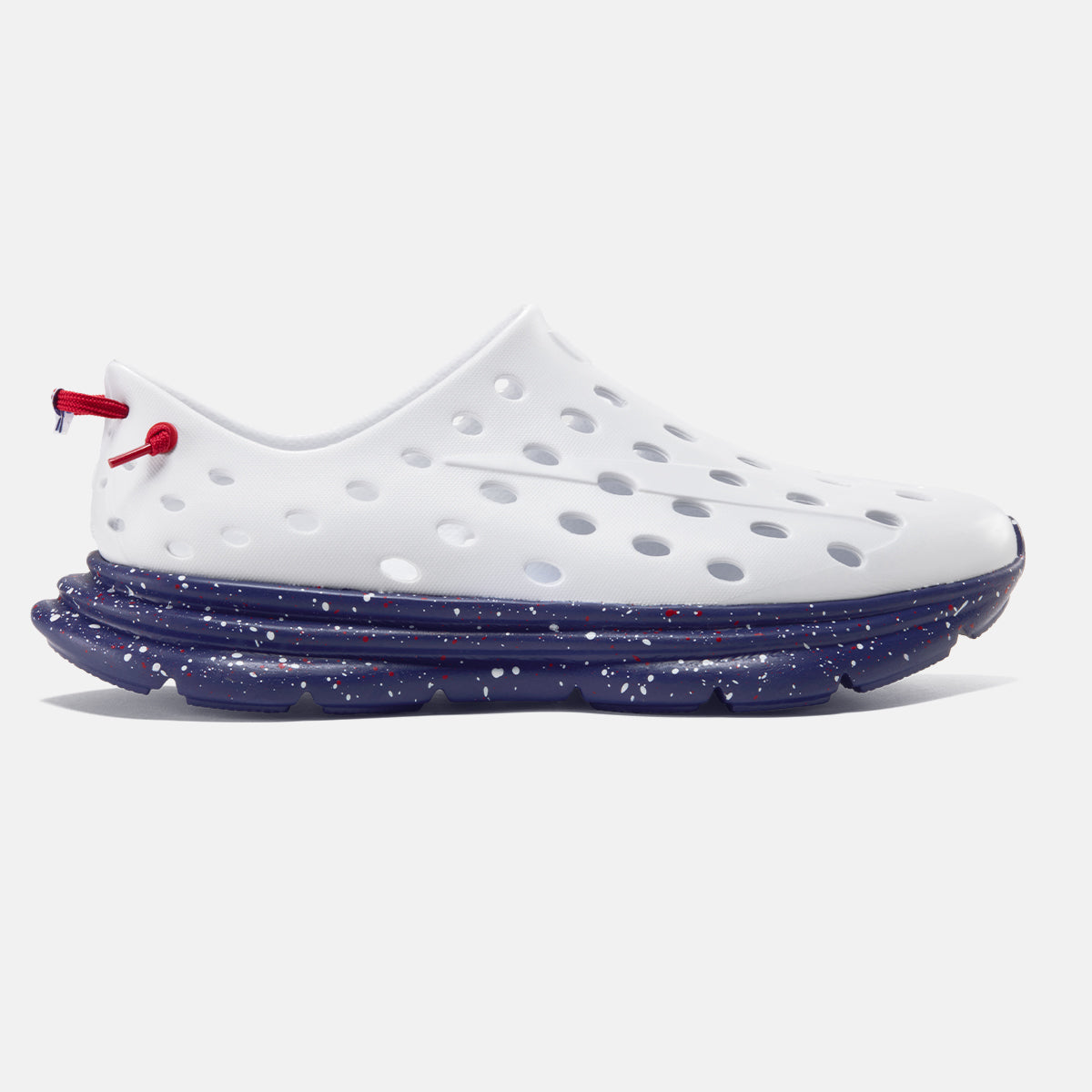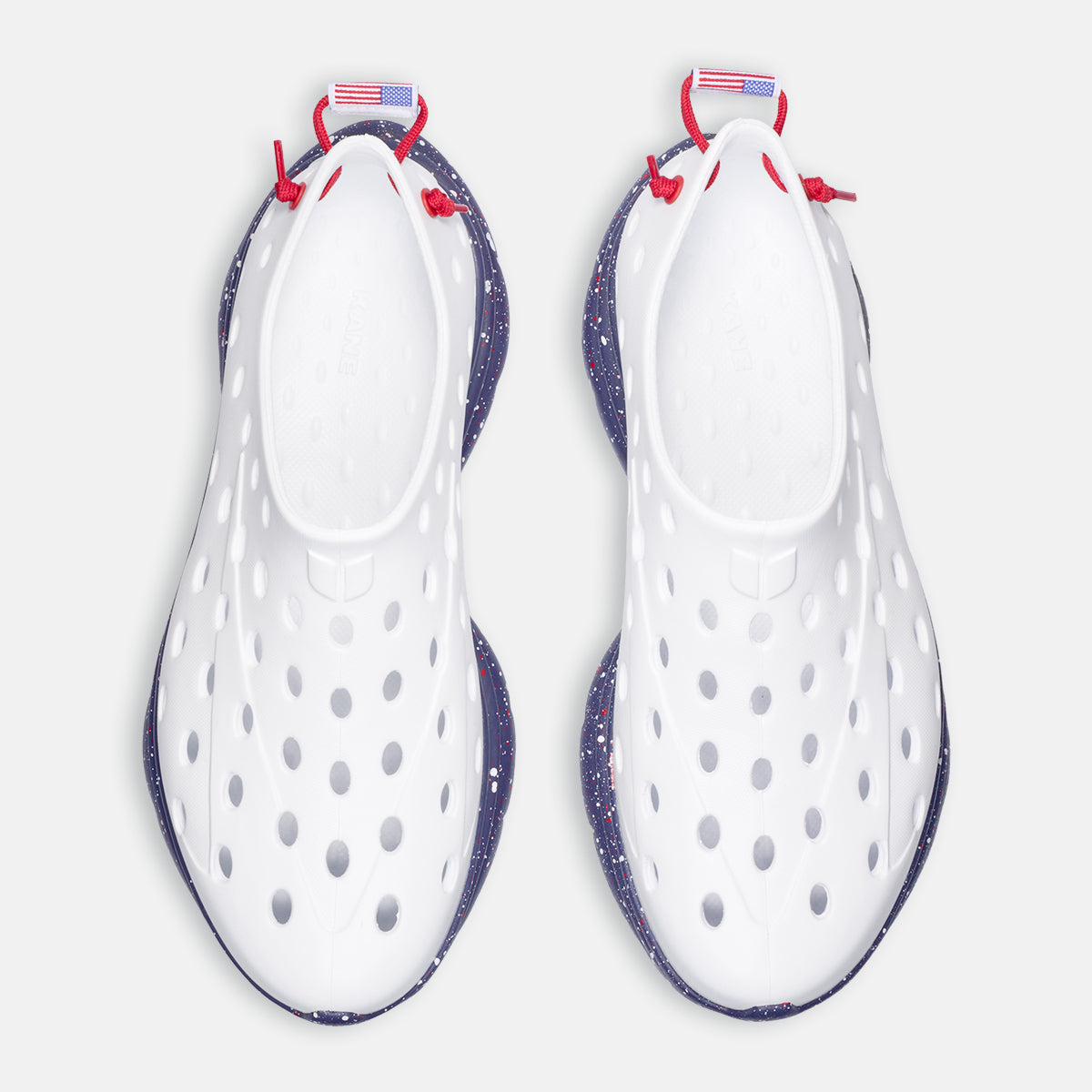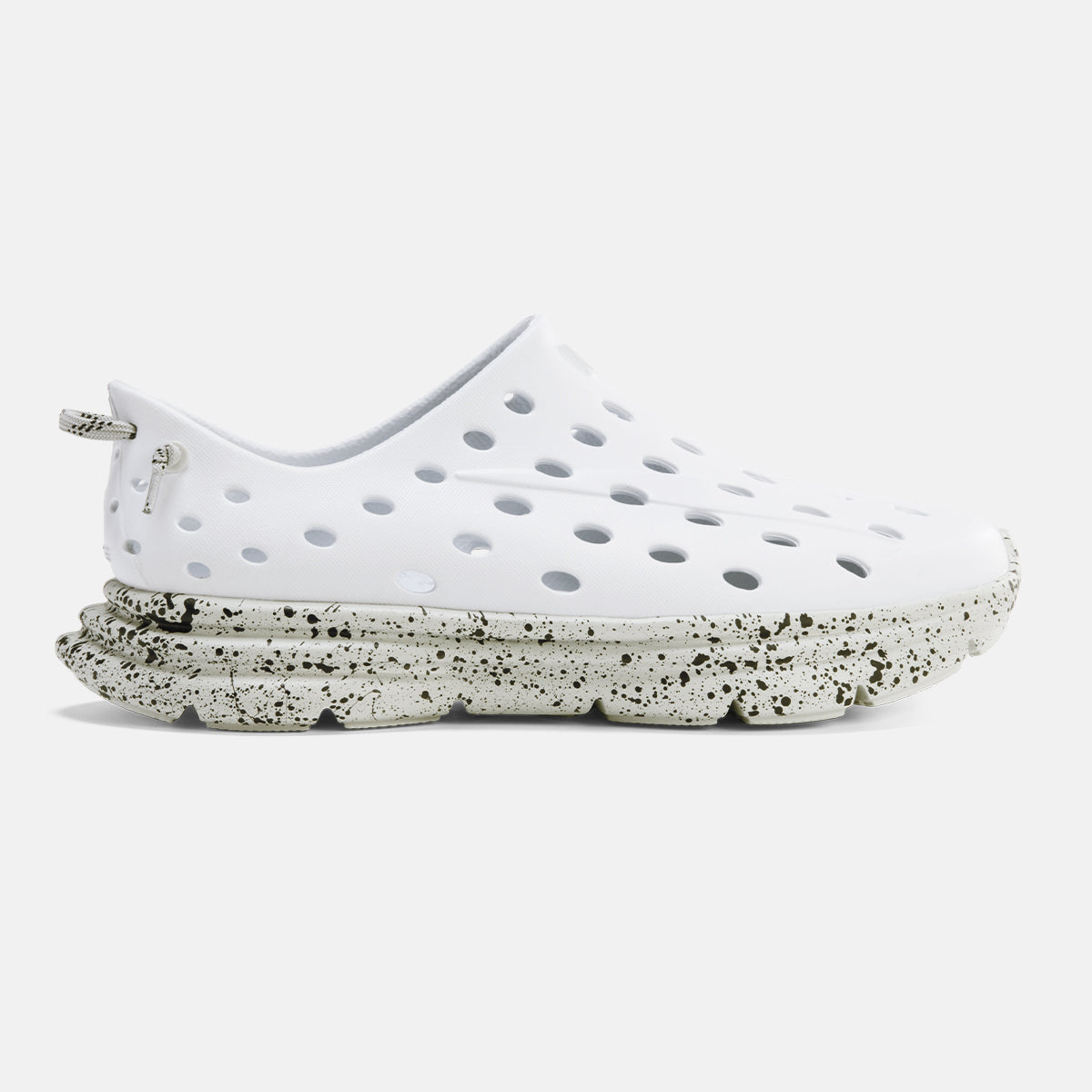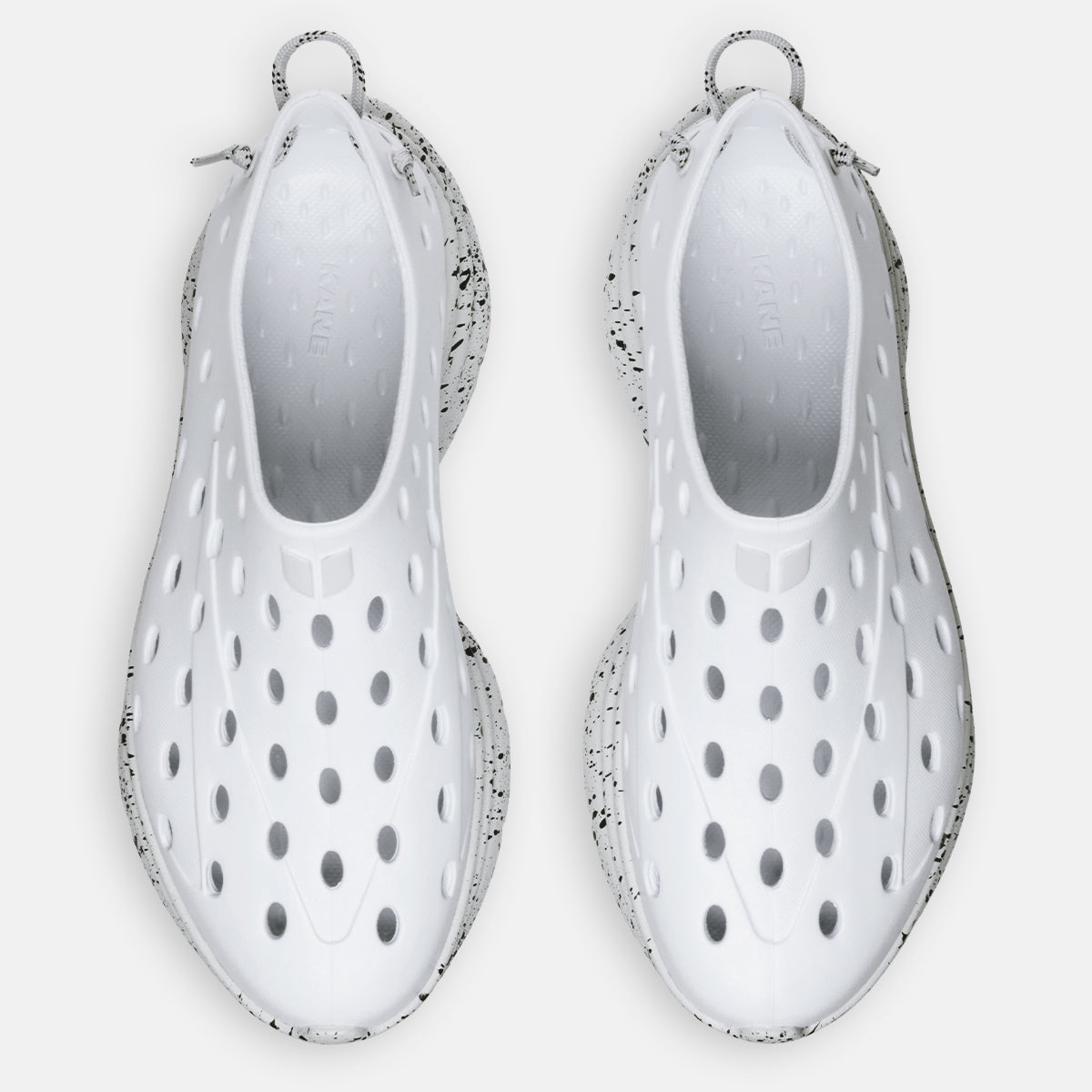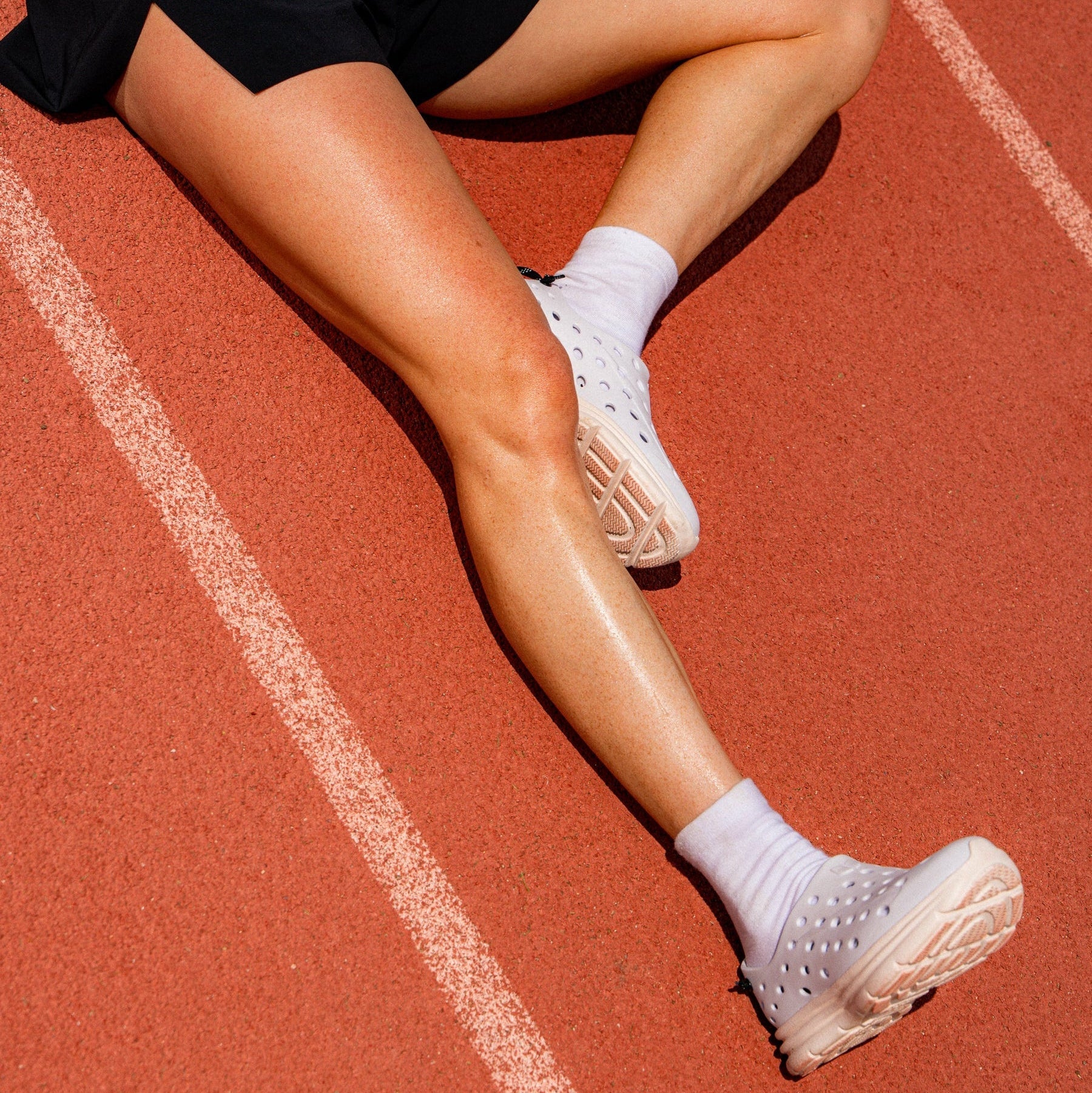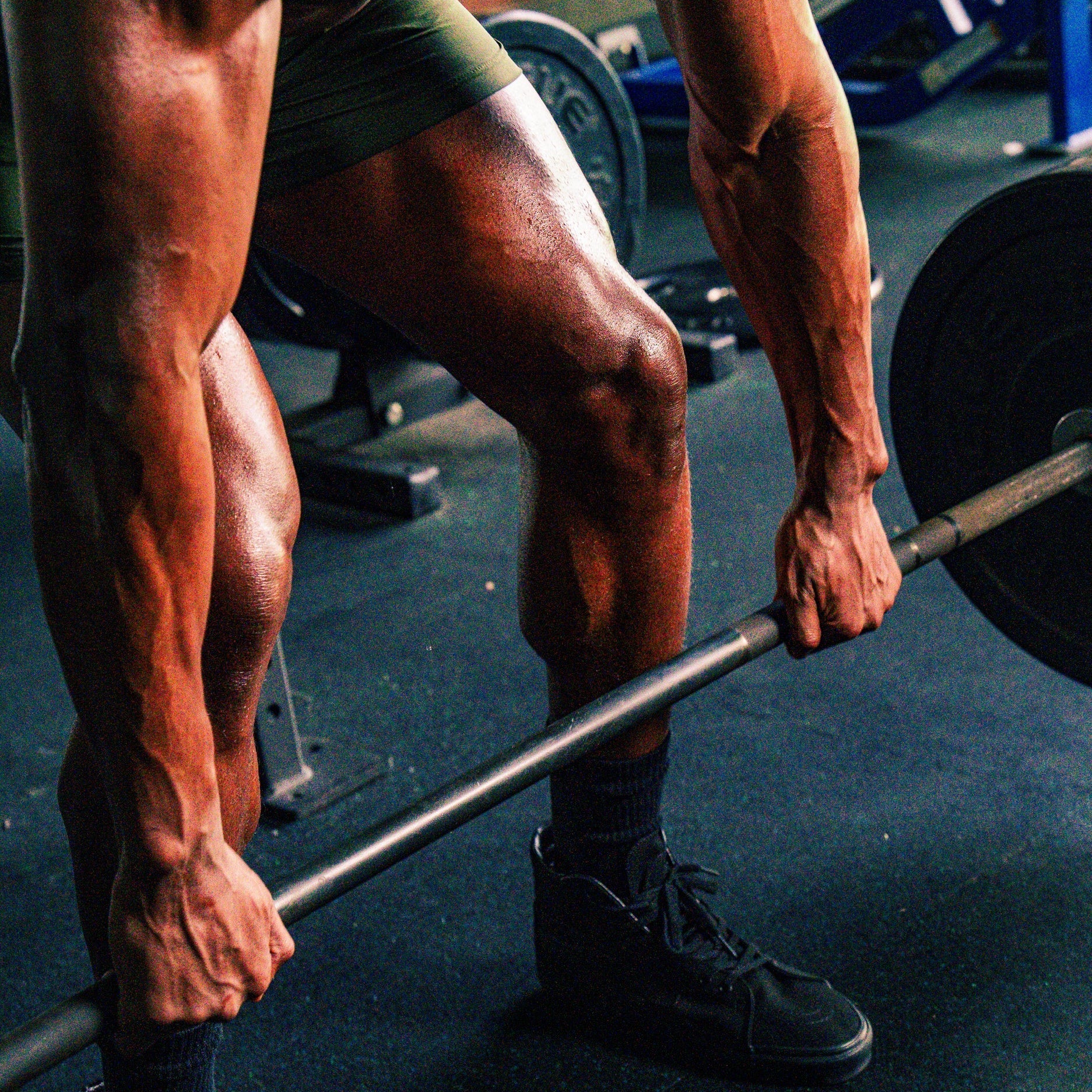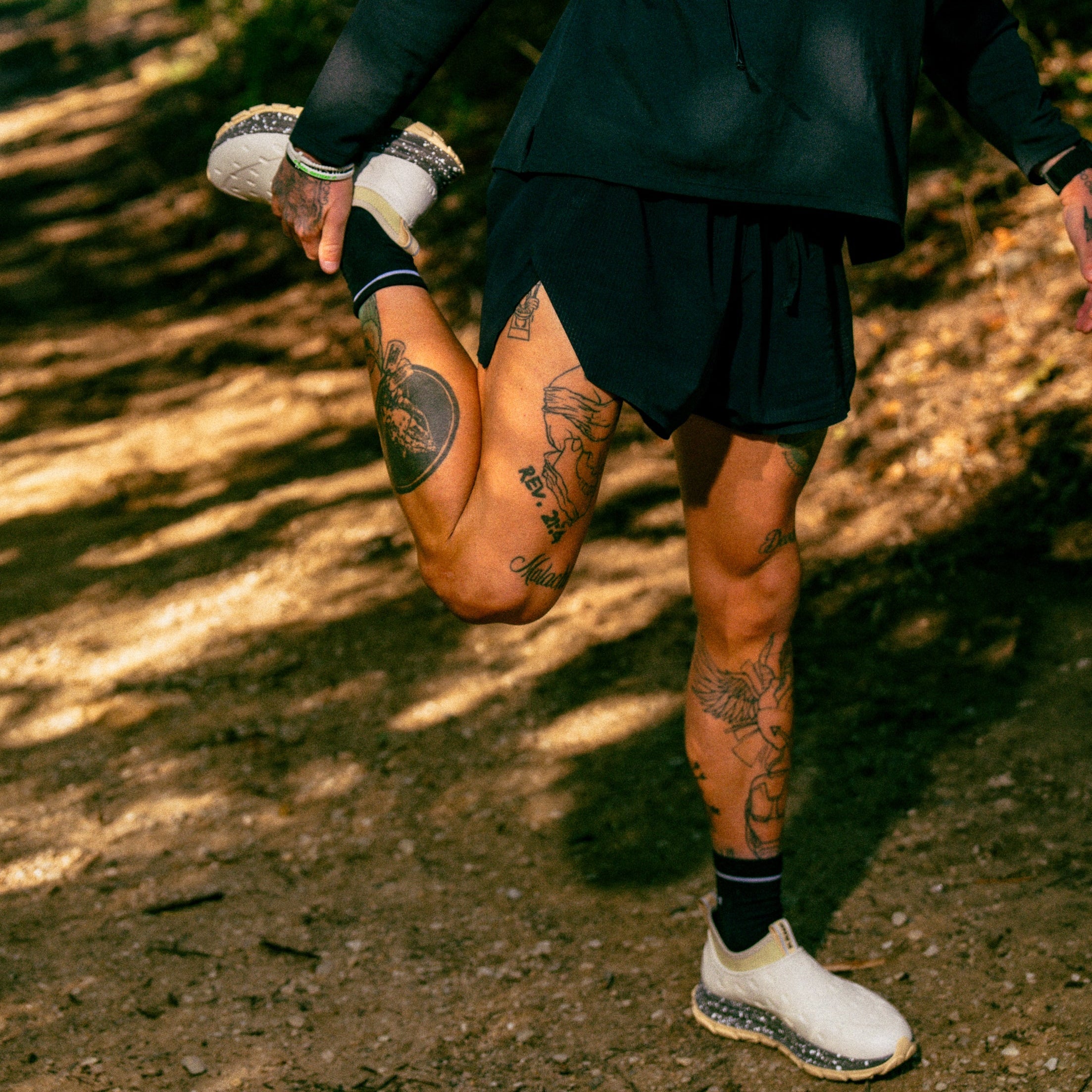Keeping your water shoes in top condition is essential—not just for their longevity but also for maintaining hygiene and performance. Frequent exposure to wet environments, mud, and other debris can cause them to accumulate dirt and get smelly over time. The best way to avoid these issues is to wash, clean, and store your footwear properly. This guide will walk you through the steps to effectively clean and maintain your shoes so they stay fresh and functional for your next adventure.
Understanding the materials of water shoes
Before diving into the basics of cleaning water shoes, it's crucial to understand what they're made of. Shoemakers use a variety of materials, including neoprene, mesh, and rubber. Neoprene provides warmth and flexibility, while mesh allows for breathability and quick drying. Rubber soles offer excellent grip and protection against sharp objects. Each of these materials has different cleaning requirements, so you'll want to pay attention when you wash your shoes to ensure you're not damaging them in the process.
Knowing what your shoe is made of will help determine whether it should be hand-washed or machine-washed. For instance, a pair made primarily of mesh and neoprene may require gentler care than those with thicker rubber components.
Preparing water shoes for cleaning
Before you start cleaning, take the time to learn how to prepare your footwear.
Initial steps to take before cleaning
Remove any inserts, laces, or rubber fasteners. This will allow you to clean every part of the shoe effectively and prevent damage to removable parts. Give them a good shake to remove loose dirt and debris. For more stubborn dirt, gently tap them together or use a soft brush to scrub off any caked-on grime.
Tools and supplies needed for cleaning
To wash your shoes well, you'll need some basic cleaning supplies. Gather a bucket or sink, mild dishwashing liquid, a soft brush, vinegar, baking soda, and a few towels. Having these items on hand will make the cleaning process much smoother.
How to wash water shoes by hand
Hand washing is often the safest and most effective method, especially for shoes made with delicate materials like mesh or neoprene. Washing by hand allows you to gently remove dirt and smells without the risk of damaging them in a washing machine. This section will guide you through a step-by-step process to thoroughly clean your footwear by hand, ensuring it's germ-free and ready for your next beach excursion or stand-up paddle-boarding session. With just a few supplies and some gentle scrubbing, they'll look and smell like new.
Step-by-step guide to hand washing
Here's how to wash shoes by hand:
- Fill a bucket or sink with warm water and add a small amount of mild dishwashing liquid or hand soap.
- Let your shoes soak in the soapy water for about 15-20 minutes. This helps to loosen debris and any germ buildup.
- Use a soft brush to gently scrub the inside and outside, focusing on areas that collect the most debris, such as the soles and seams.
- Rinse them thoroughly. Make sure to rinse out any remaining suds to avoid stiff fabrics and strong smells.
- Air dry the shoes completely by placing them in a well-ventilated area, away from direct sunlight, which can cause fading and damage to the material.
Drying tips
To ensure your shoes dry quickly and evenly, stuff them with a towel to absorb excess water and help them retain their shape. Avoid using a hair dryer or other heat sources, as excessive heat can damage the shoe materials. Instead, use a fan or place the shoes in a breezy area to speed up drying.
How to clean water shoes in a washing machine
While hand washing is ideal for many types of shoes, machine washing can be a convenient and effective option for sturdier models. However, using a washer requires some precautions to avoid damaging the shoes. This section will cover when it's appropriate to machine wash them and provide a detailed guide on how to do it safely. By following these instructions, you can thoroughly clean your shoes without sacrificing their shape or durability.
When to consider machine washing
Machine washing is a convenient option for sturdier shoes that can withstand more agitation, such as those with solid rubber soles or reinforced stitching. However, always check the manufacturer's care instructions before choosing this method.
Machine washing instructions
- Place the pair of shoes in a mesh laundry bag to protect them during the wash cycle.
- Add a few towels, socks, or work clothes to the washing machine to balance the load and reduce the impact on your shoes.
- Use a gentle cycle with cold or lukewarm water and a mild detergent. Avoid using hot water, bleach, or a fabric softener, as they can degrade the materials.
- Once the spin cycle is complete, remove the shoes from the machine and allow them to air dry. Never put water shoes in the dryer, as the heat can warp the soles and damage the materials.
Post-wash care
After washing your shoes in a machine, make sure they're dry before storing them. Any remaining moisture can lead to mold and mildew growth, resulting in bad smells and potential damage.
Dealing with odors and stubborn stains
Water shoes are often exposed to conditions that can cause them to develop unpleasant smells and stubborn stains. Bacteria from wet environments or debris buildup can make your shoes smell bad and look dirty over time. This section will explain how to tackle these common problems using various methods, including natural deodorizers and stain removers. You can keep your shoes fresh and clean with the proper techniques, no matter how often they get wet.
Common causes of odor in water shoes
Bacteria buildup, prolonged dampness, and debris trapped in the materials are often the source of smells. Regular cleaning and drying is the best way to prevent these smells from developing.
Removing smells from water shoes
- Baking soda directly sprinkled inside can help neutralize the smell. Let it sit overnight, then shake out any excess powder the next day.
- Fill a basin with equal parts vinegar and water. Soak the shoes for 30 minutes to help kill bacteria and remove smells. Rinse thoroughly with fresh water and allow to air dry completely.
- For persistent smells, consider using a shoe deodorizer spray or placing the shoes in a sealed plastic bag with a box of baking soda overnight.
How to treat stubborn stains
Pre-treat the affected areas with a mild detergent or a paste made from baking soda and water for tougher stains. Gently rub with a soft brush, then rinse. Avoid harsh chemicals or abrasive scrubbing pads, as they can damage the material.
Proper storage of water shoes
Proper storage is key to maintaining the longevity and effectiveness of your footwear. Putting it away wet is a sure way to cultivate mold and mildew, which could permanently damage the materials. This section will outline the best practices for storage to ensure your footwear stays in the best possible condition. By taking a few simple steps to dry and store your footwear correctly, you can prevent smells and deterioration, keeping them ready for your next adventure.
Follow these best practices for storage:
- Ensure they're dry before storing them to prevent mildew growth
- Store them in a cool, dry place away from direct sun to avoid fading and material degradation
- Use a breathable bag or container to allow air circulation and keep them fresh
Maintenance tips for prolonging the life of water shoes
Regular maintenance can significantly extend the life of your footwear, ensuring they stay comfortable and functional. Regular cleaning sessions, frequent checks for wear and tear, and preventative measures to protect against damage will go a long way.
In this section, you'll learn how to maintain your shoes effectively so they continue to provide the support and protection you need. With these simple maintenance tips, you can maximize their value and lifespan.
Regular cleaning and inspection
Regularly inspecting your footwear for signs of wear and damage, such as loose stitching or worn soles, can help you address minor issues before they become major problems. Clean your shoes after every use, especially after trekking through saltwater or sand.
Preventive measures
To minimize smells and keep them clean, rinse your footwear with fresh water after each use and avoid leaving them wet for extended periods. Using foot powders or sprays can also help reduce moisture and bacteria.
Conclusion
Taking the time to maintain your footwear by washing, cleaning, and storing it appropriately will ensure it'll be there for you for years to come. Regular care will help prevent smells, maintain the integrity of the materials, and ensure your shoes are always ready for your next adventure. With these tips, they'll stay fresh, functional, and comfortable—no matter where your feet take you!
Frequently asked questions
Can water shoes be washed?
Washing water shoes is a great idea, but the best method depends on the type. You can wash most styles by hand using mild soap and water, which helps remove organic material and bacteria without damaging the materials. Machine washing may be fine for a more durable pair, such as those with sturdy rubber soles or reinforced stitching. However, always check the manufacturer’s care instructions before washing. Avoid using harsh detergents, bleach, or fabric softeners, as these can degrade the materials and reduce their effectiveness in water. Proper washing, whether by hand or machine, will help keep your footwear clean and fresh.
Why do my water shoes smell bad?
Water shoes can develop a foul smell due to a combination of factors, including bacteria, mold, and mildew growth. These microorganisms thrive in wet conditions—the same environments water shoes were meant for! After exposure to water, sand, and other natural elements, moisture can become trapped in the fabric and seams. Wet shoes provide an ideal breeding ground for bacteria. Additionally, organic matter from lakes, rivers, or oceans can accumulate inside, contributing to the smell. To prevent and eliminate bad smells, clean them thoroughly after each use and ensure they're completely dry before storing them. Natural deodorizers like vinegar can also help neutralize odors and keep them smelling fresh.
How do you clean mesh water shoes?
Cleaning a mesh water shoe requires some care to avoid damaging the delicate fabric. Mesh materials are excellent for breathability and quick drying but can be more susceptible to tearing or fraying if handled roughly. To clean a mesh pair, remove any loose debris by gently tapping the shoes together or using a soft brush. Fill a basin or sink with lukewarm water and add a small amount of mild dishwashing liquid or hand soap. Submerge them and gently scrub the mesh areas with a soft brush or cloth, taking care not to use excessive force. Rinse thoroughly with fresh water to remove all soap residue. After cleaning, let them dry in a well-ventilated area, away from direct sunlight, to avoid fading or damaging the mesh. Avoid using a washing machine for mesh water shoes unless the manufacturer specifically recommends it.
How do you get the dirty water smell out of shoes?
Getting a dirty water smell out can be challenging but achievable with the proper methods. The first step is to thoroughly clean the shoes to remove any organic material that may be contributing to the odor. You can start by gently washing them with warm water and mild dishwashing liquid and scrubbing, if necessary, to lift away any grime. Rinse them well with clean water. Try soaking them in equal parts vinegar and water for about 30 minutes to tackle the smell. Vinegar is a natural deodorizer and can help kill odor-causing bacteria. After soaking, rinse them with fresh water and let them dry completely. To further neutralize any lingering odors, sprinkle baking soda inside and let them sit overnight. Shake out the excess the next day—they should smell much fresher. Always ensure they're completely dry before storing them to prevent mold and mildew, which can contribute to bad smells.



































